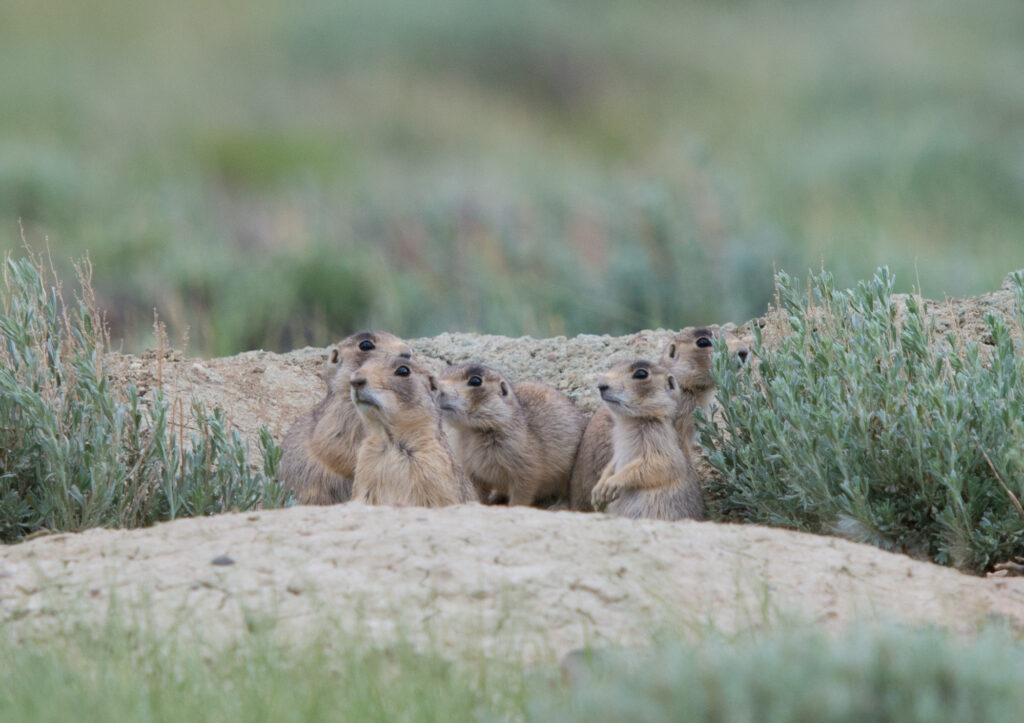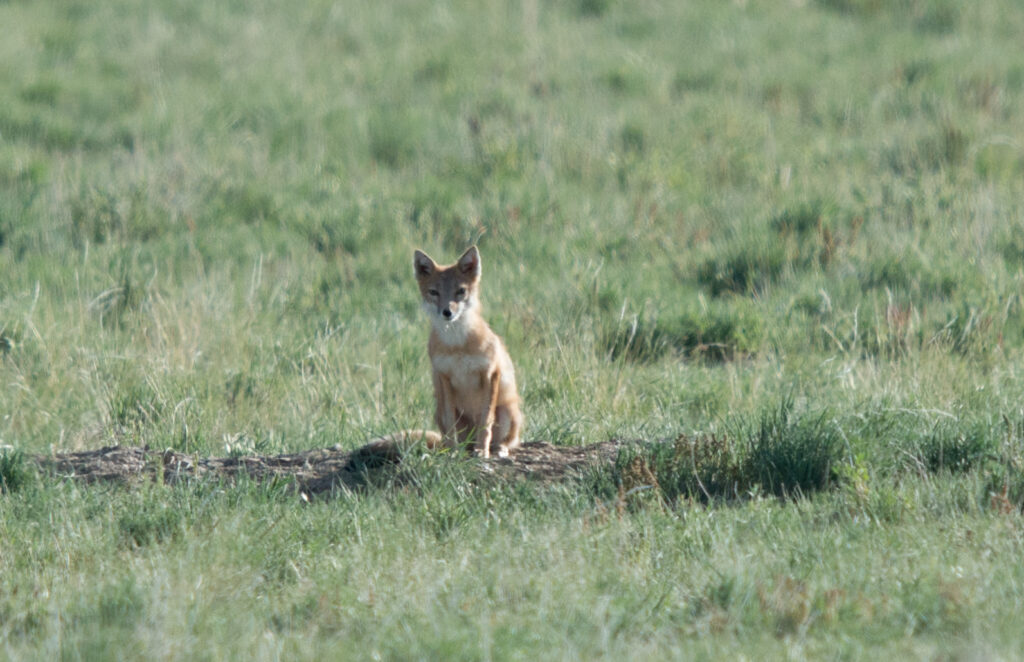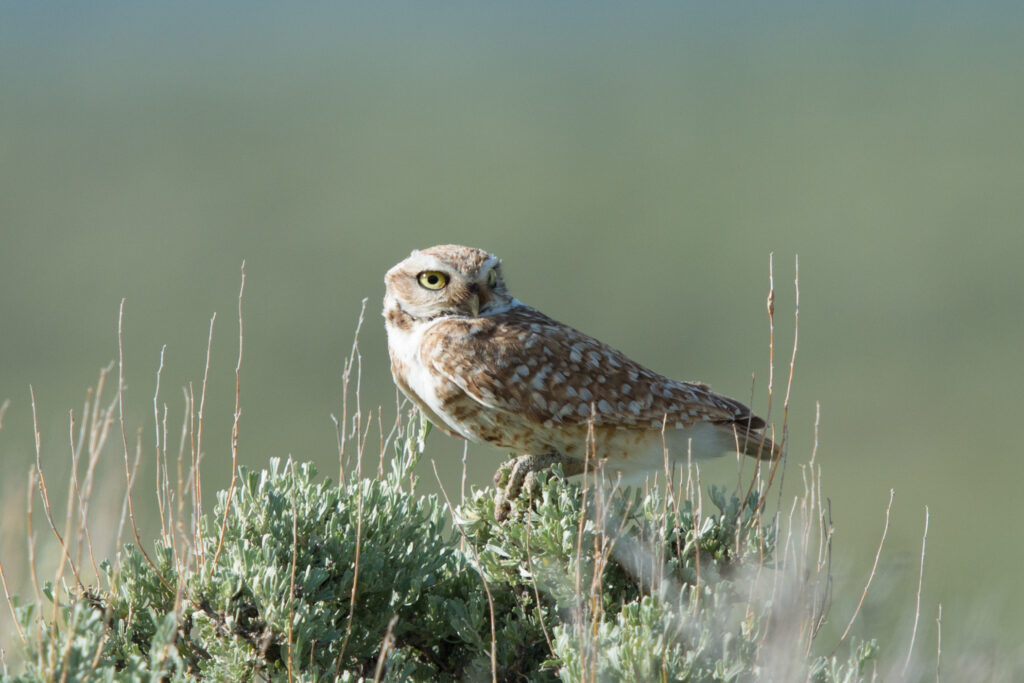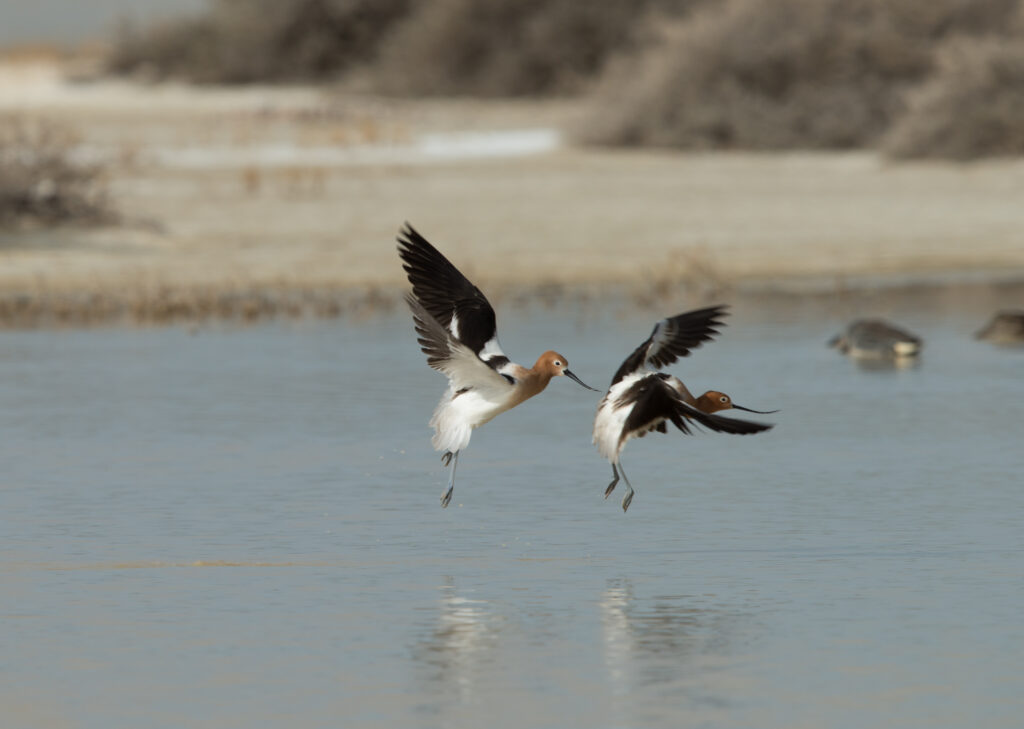Wildlife & Hunting
From the longest migrations in the lower-48 to the most in-tact sage brush steppe ecosystem in the West, the Red Desert hosts numerous large and small mammals, birds, and reptiles. Hunters travel from across the globe to experience world class hunting opportunities.
LONG UNGULATE MIGRATIONS
The longest big game migration corridor in the lower 48 United States begins just north of Rock Springs in the Red Desert.
Twice a year, mule deer migrate between their winter range in the Red Desert sagebrush and their high elevation summer range 150 miles north in the Hoback. This one-way trip, aptly called the Red Desert to Hoback migration, allows the deer to access highly nutritious forage, essential to their health and survival, over the course of several months as the sage and grasses “green up” throughout the spring. Mule deer are extremely faithful to their migration routes, with herds traveling the exact same paths year after year. Recent scientific research suggests migration routes are passed down from one generation of deer to the next, in a continuous line spanning centuries. Studies also show that migration corridors are threatened by human disturbance and development, and that mule deer populations across the state are in decline.
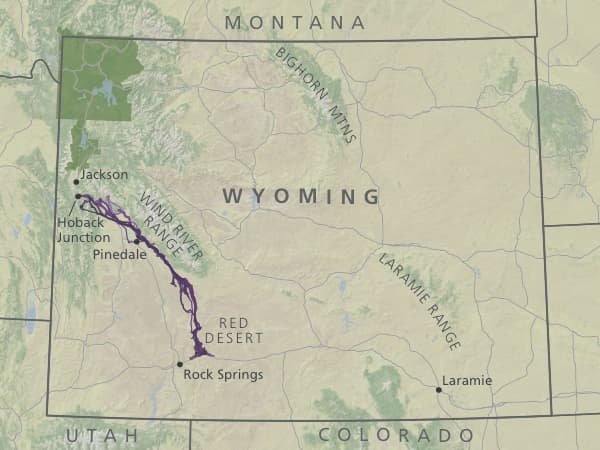
Protecting migration corridors and crucial winter range is essential to conserve these iconic herds — and the Red Desert provides some of their last, best habitat.
MORE ON UNGULATE MIGRATIONS IN WYOMING
Check out Wyoming Migration Initiative’s map to view the entire length of the Red Desert to Hoback mule deer migration corridor!
You can also visit their website for more information, maps, and more!
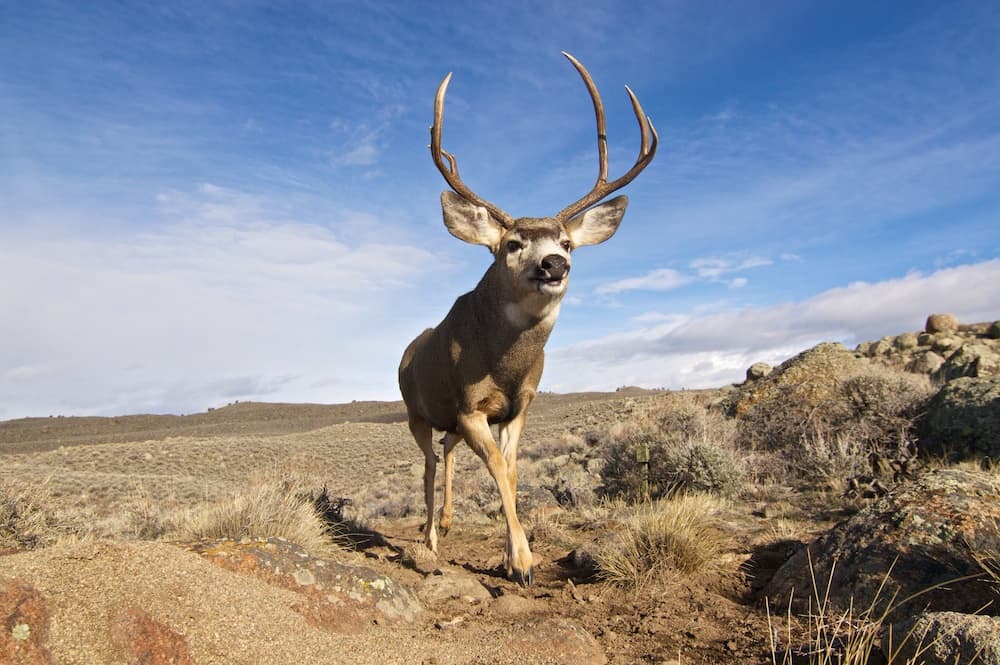
THE GOLDEN TRIANGLE
The “Golden Triangle” is a name wildlife biologists use to describe the stretch of land north of Farson bordered by highway 28 and 191, continuing to the flanks of the Wind River range. It is also known as the Big Sandy.
This pristine stretch of sagebrush steppe is known for its exceptional wildlife habitat and rich biodiversity.
The rolling sagebrush sea supports the world’s longest mule deer migration corridor, huge herds of elk that summer in the Wind River Mountains, plus pronghorn , golden eagles, red fox, and hundreds of other sagebrush-dependent species. The region also sustains the largest Greater sage-grouse population on the planet, a species that is imperiled across the West. Here, more than 800 male grouse perform their elaborate mating rituals in the spring on mating grounds called leks.

WORLD CLASS HUNTING OPPORTUNITIES
Big Sandy/Golden Triangle
Smack dab in the middle of the famed Hoback to Red Desert migration route, the Big Sandy area hosts one of the two most coveted trophy deer hunting opportunities in Wyoming. The unit 130’s limited quota hunt was recently hunted by hunting personality, Randy Newberg in 2019. On that hunt, Randy explained how he used all of the preference points he had built from the last 13 years to have the mule deer hunt opportunity in Big Sandy. Like many folks who visit this place during the migration, he was rewarded with a truly unique experience and beautiful trophy.
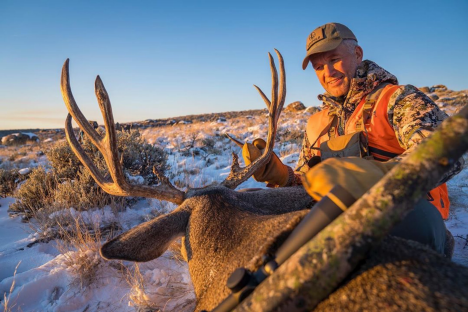
“When you think of all the hurdles these deer go through…these deer need us. They need our voice and they need our advocacy.”
Randy Newberg
Northern Red Desert
Most people do not associate Rocky Mountain elk with dry, arid landscapes. The Northern Red Desert, however, holds more elk than any desert in the world. Guy Eastman of Eastman’s Hunting Journal gives this limited quota elk hunt the top rated mark of any elk hunting opportunity in the state of Wyoming.
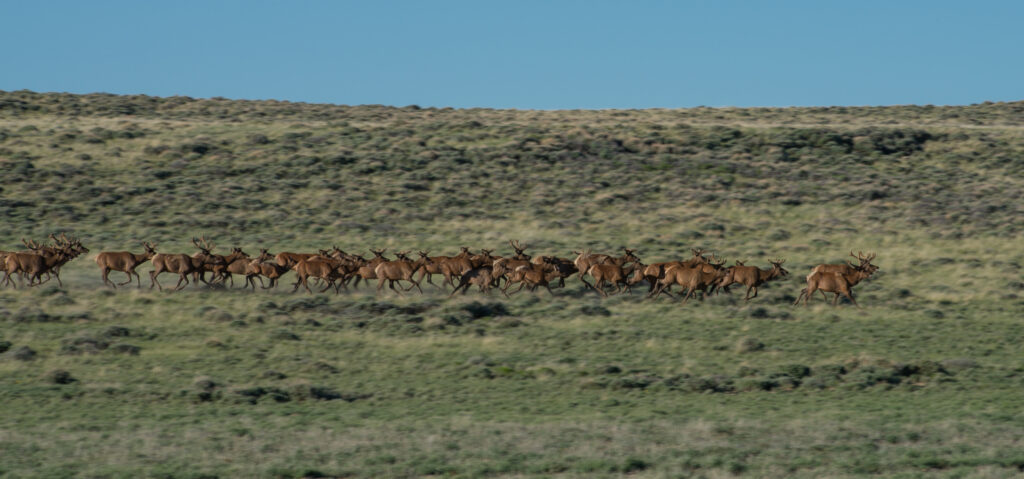
“The best elk hunt Wyoming has to offer this year should be the Steamboat hunt.”
Guy Eastman, 2019
Furthermore, this is one of the only opportunities to hunt bull elk in the velvet with a rifle within a unique unit boundary near Farson. It is another hunting opportunity that is virtually a once-in-a-lifetime tag for residents given a 2% chance of drawing year to year.
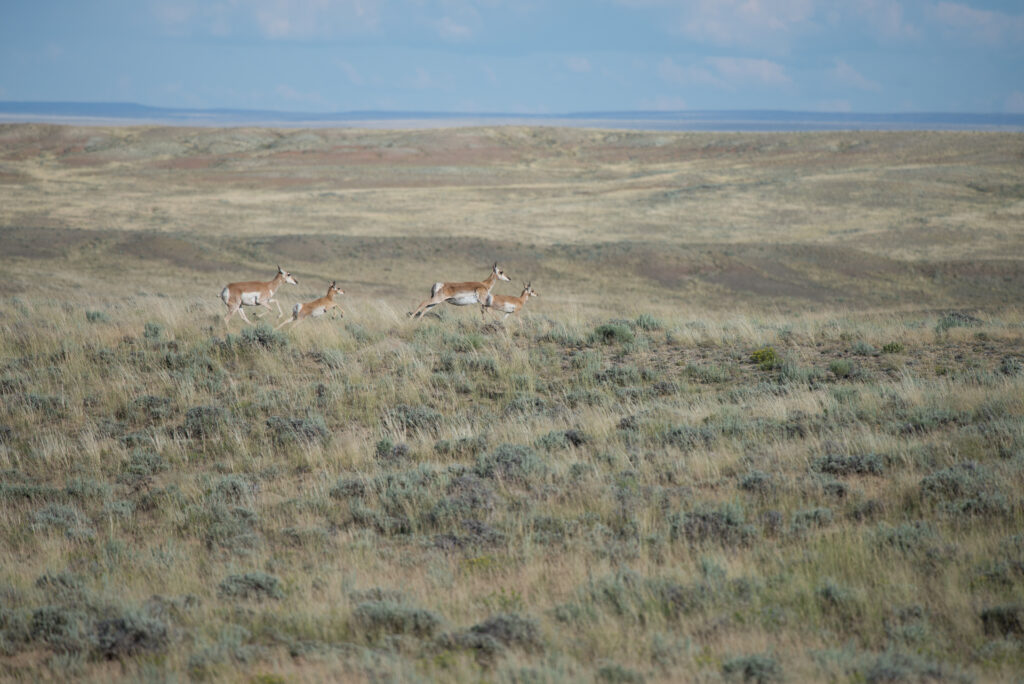
Both of these areas (Big Sandy and Jack Morrow Hills/Northern Red Desert) are known as high-quality public land antelope hunting opportunities. The antelope in these areas live on the vast BLM sage flats which let sportsmen look for trophy quality bucks without any private land access. Nonresidents wait 8 to 9 years just to get a chance to experience the quintessential speedgoat hunting available in these areas.
Small Mammal Species and Birds
Many people flock to the Red Desert to view rare birds and small mammals. The Red Desert is home to dozens of small mammals including coyotes, red tail foxes, white tailed jack rabbits, bob cats, and prairie dogs. Birds such as the White Faced Ibis, phalaropes, golden and bald eagles, burrowing owls, sandpipers, avocets, and others are abundant amongst the the sage brush sea, springs, and prairie grasses.

